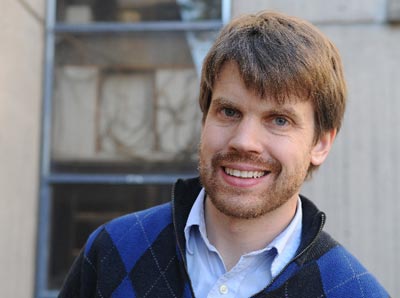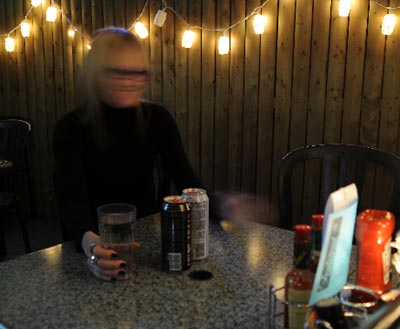 |
| Dal prof Sean Barrett studies "stimultaneous substance use," such as the combination of energy drinks and alcohol. (Danny Abriel Photo) |
This fall, several U.S. universities banned Four Loko from their campuses. The increasingly popular American energy beverage, which can contain up to 12 per cent alcohol, was associated with a string of incidents in which people were hospitalized or died of alcohol poisoning. Last month, pressure from the Federal Drug Administration forced its manufacturer to remove caffeine from the drink.
Energy drinks—Red Bull, Monster, Rockstar and others—are big business in Canada, expected to reach over $375 million in sales by next year. And while energy drinks that contain alcohol haven’t made their way to Canada in any significant way, their mixing is already common with bar drinkers, with the “vodka and Red Bull” becoming an increasingly popular Saturday night selection.
None of this surprises Sean Barrett, though the trend worries him. The associate professor of psychology and psychiatry at Â鶹´«Ă˝ studies simultaneous substance use, particularly patterns of drug use related to alcohol. Dr. Barrett was one of several Â鶹´«Ă˝ researchers involved in a study, published in a recent issue of , investigating drinking patterns when alcohol and caffeinated energy drinks were combined. Researchers interviewed more than 70 Â鶹´«Ă˝ students about their energy drink consumption and alcohol use.
“What we found was that energy drinks basically doubled the amount that people reported drinking,” he says. “So if they had an average of four drinks when they weren’t mixing with energy drinks, they would have around eight if they were. That’s actually a pretty profound increase, but it’s consistent with our other research where we see an increase in alcohol consumption related to the use of other stimulant drugs, like tobacco.”
 |
| According to Dr. Barrett's study, “What we found was that energy drinks basically doubled the amount that people reported drinking,” he says. (Photo illustration by Danny Abriel) |
Why does this occur? Dr. Barrett says that the research on energy drinks is so preliminary that there’s not a conclusive answer yet. One hypothesis is that it’s purely a social behaviour: people who are having a good time use more of anything. There’s also an interesting correlation between the banning of smoking in bars—a popular stimulant for many who drink—with the rising use of energy drinks.
However, the most interesting hypotheses are physiological: that the drinks’ ingredients may be affecting the release of dopamine from the brain, prolonging the initial euphoria that comes with rising blood-alcohol levels and holding off the sedative-like effects when they fall. This would parallel lab research done with other stimulants like tobacco cigarettes and cocaine.
“Research has yet to determine if it’s the caffeine or perhaps an amino acid called taurine that might be affecting the brain and leading to these behaviours,” says Dr. Barrett. “But what we do know that when alcohol is used together with these energy drinks, people say they feel more sober but they still tend to perform poorly on various neurocognitive tasks. They’re still physically intoxicated, they just feel like they aren’t.”
Because people tend to consume more alcohol when they co-use energy drinks it can put them at an risk for acute alcohol poisoning, increase the possibility of engaging in other risk-taking behaviours and—in the longer term— build up the sort of tolerance that can lead to dependence.
Dr. Barrett notes that it will take more research before the precise effects of combining energy drinks with alcohol can be confirmed. But he advises caution and consideration for those who enjoy the beverages in tandem.
“We can’t yet say for sure if it’s neurochemical or social or something else, but we see the behaviour pattern rather clearly. When people drink with energy drinks, they tend to drink in a more hazardous way.”
SEE JOURNAL ARTICLE: in Drug and Alcohol Review
